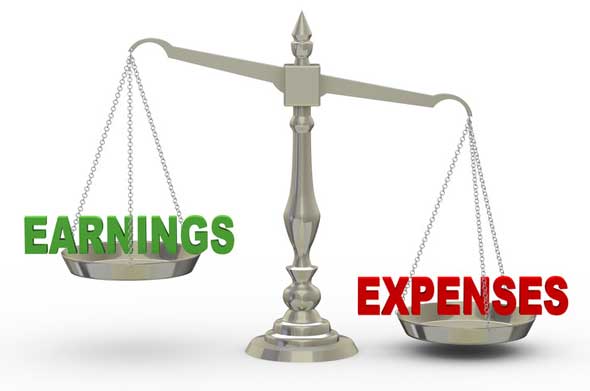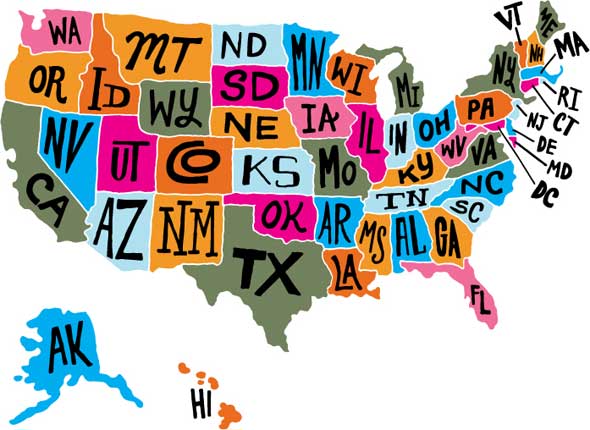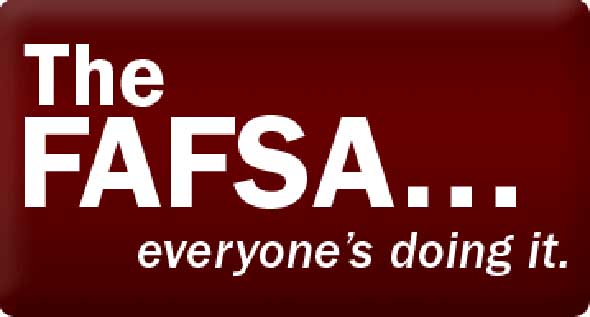{{parent.cta_data.text}}
COLLEGE SAVINGS 101

The 25 best 529 plan questions of 2014
http://www.savingforcollege.com/articles/the-25-best-529-plan-questions-of-2014-705
Posted: 2014-12-30
Is opening a 529 plan part of your New Year’s resolution? The tax-efficient college savings plans are becoming more popular than ever, and for good reason. To help you stick to your goal, we’ve compiled the following list of questions from our webcast audiences throughout the year.
Stay tuned for registration information on upcoming webcasts in 2015!

1. How much do I need to save for college?
- The amount you need to save will depend on a number of factors.
- You’ll need to consider who you are saving for, how much time you have until the first tuition bill arrives and your school choice.
- The 529 College Savings Planner can help develop a customized savings strategy to meet your individual needs.
(Photo credit: Can Stock Photo)

2. What are the benefits of a 529 plan over a traditional savings account?
- With a 529 plan, you won’t pay federal taxes on your investment earnings, and you’ll also avoid taxes on withdrawals if the money is spent toward college expenses.
- Some plans also offer state tax breaks for residents.
- Many plans also offer age-based options that will automatically allocate investments in your portfolio based on the age of the beneficiary.
(Photo credit: Can Stock Photo)

3. What are the key differences between a 529 plan and a Coverdell Education Savings Account?
- Coverdell ESAs offer tax-free treatment for K-12 as well as college expenses.
- There is a $2,000 per child annual contribution limit for Coverdell ESAs, as well as income limits.
- Similar to an UGMA or UTMA account, assets in a Coverdell ESA are not revocable.
(Photo credit: Can Stock Photo)

4. How do I set up a 529 plan?
- The first thing to do is decide which plan is best for your needs.
- You’ll want to pay attention to the fees charged by the plan and the investment options offered.
- You can enroll in a 529 directly through the plan’s website or with the help of a financial advisor.
[PODCAST] Getting started with a 529 plan - Step 1: Finding the best plan
(Photo credit: Can Stock Photo)

5. What is the best 529 plan?
- The answer depends on your individual situation and objectives, so you’ll need to do your research.
- Savingforcollege.com assigns each plan a 5-Cap Rating, which measures its strengths and weaknesses when compared to all other529 plans.
- You can also reference the semi-annual fee study and quarterly performance rankings found on the site.
(Photo credit: Can Stock Photo)

6. How should an expense ratio affect my investment choice in a 529 plan?
- The expense ratio represents the amount of fees charged by the underlying mutual funds in the portfolio.
- Passively managed index funds are generally less expensive than actively managed funds.
- It’s a good idea to compare expense ratios of different plans because over time expenses will shrink your savings.
(Photo credit: Can Stock Photo)

7. How do I know how much my state’s tax deduction is actually worth?
- State tax breaks on 529 plans vary by state, and some do not offer any benefits.
- You can compare the benefits offered by different state’s plans on Savingforcollege.com.
- For more specifics on how much your specific state tax break will help you save for college, try the State Tax 529 Calculator.
(Photo credit: New York Times)

8. My state’s 529 plan doesn’t offer tax benefits – should I consider another state’s plan?
- Absolutely. You can invest in almost any 529 plan, no matter where you live.
- Even if your state’s plan does offer a state tax break you should still make sure you are happy with the investment manager, fees and expenses and investment options.
- Poor performance and high fees can sometimes outweigh the benefits of a state tax break.
(Photo credit: Someecards)

9. How do I rollover an existing 529 plan into another state’s plan?
- Federal tax law allows you to rollover the funds in your current 529 plan into a different plan once during a 12-month period.
- Simply visit the new plan’s website, complete and submit the rollover contribution form and the plan’s administrator will transfer the funds.
- The amount you transfer may or may not qualify for a state tax deduction, as some states do not treat rollovers the same way as regular contributions.
(Photo credit: The Financial Aid Handbook)

10. Will I be penalized if I save with one state’s plan but attend college in another state?
- You can use 529 savings to pay for expenses at any almost any school, no matter where your plan is based.
- This includes public in-state and out-of-state schools as well as private colleges and universities.
- However, a few states offer prepaid tuition contracts where you can buy future tuition for a specific school.
(Photo credit: Can Stock Photo)

11. Can I use 529 funds to study abroad?
- Yes! As long as the school you are paying for is an eligible educational institution.
- To find out if a U.S. or international school is 529 eligible you can use the Federal School Code Lookup tool.
- Tuition, books, supplies and equipment and some room and board would be considered qualified expenses.
(Photo credit: Can Stock Photo)

12. Are airfare costs home from college considered qualified expenses?
- No, only qualified higher education expenses are allowed to be withdrawn tax free from a 529 plan.
- This includes tuition, mandatory fees, some room and board, textbooks and supplies and equipment that are required for enrollment.
- The earnings portion of non-qualified distributions will be faced with income tax and a 10% penalty.
(Photo credit: Can Stock Photo)

13. Can I use my 529 savings to pay for trade school?
- Yes! 529 plan funds can be used to pay for almost any qualified post-secondary education.
- This includes most vocational and technical schools, including culinary school.
- By 2020 it is expected that 65% of jobs will require some sort of post-high school education and training.
(Photo credit: Can Stock Photo)

14. What is the best way to save for college when you have more than one child?
- The most common method is to fund a plan equally for each child.
- If you have kids that are four or more years apart, you can use one single plan and change the beneficiary after the first graduates from college.
- Just be sure that your plan’s investment allocations are suitable for the beneficiary, especially if you are using an age-based option.
How to effectively save for college when you have multiple children
(Photo credit: Can Stock Photo)

15. How can a grandparent set up or contribute to a 529 plan?
- Grandparents can open a 529 account in their own name or contribute to an existing account.
- If there are multiple grandchildren to save for, we recommend opening an account for each one.
- Keep in mind that if a grandparent takes a distribution and pays the college directly, it could negatively impact financial aid eligibility.

16. Can savings be transferred from one grandchild to another?
- A 529 account can only have one individual named as a beneficiary.
- If you have more than one grandchild to save for you will need to open a new account for the other grandchild.
- You can transfer funds tax-free from the existing account into the new one.
(Photo credit: Can Stock Photo)

17. How can I use a 529 plan as an estate-planning vehicle?
- When you make a contribution to your 529 plan, the value of the deposit is removed from your estate but you retain control of the account.
- Contributions qualify for the annual $14,000 gift tax exclusion.
- If you make a contribution between $14,000 and $70,000 you can treat the deposit as made over a 5-year period in order to shelter a larger amount.
(Photo credit: Can Stock Photo)

18. I’m a current college student – would I benefit from a 529 plan?
- Definitely! Especially if you are able to get a state tax deduction.
- You can also use the funds later if you are planning to attend graduate school.
- Any leftover savings can be spent on your own child’s future college bills.
(Photo credit: Can Stock Photo)

19. How can I use a 529 plan for a child who isn’t born yet?
- It’s never too early to start saving for college.
- You can open an account in your name and change the beneficiary once the child is born.
- A baby shower is the perfect occasion for friends and family to make contributions.
(Photo credit: Can Stock Photo)

20. Can I use 529 funds to pay off student loans?
- Student loans are not considered qualified higher education expenses.
- You can take a withdrawal to pay down loans, but you will be taxed and hit with a 10% penalty on the earnings portion.
- 529 plans are intended to help avoid or reduce the amount of loans you take out.
(Photo credit: Can Stock Photo)

21. How do the American Opportunity Credit and Lifetime Learning Credit affect 529 plan withdrawals?
- You may take advantage of these federal tax incentives as long as you avoid “double-dipping”
- When calculating your withdrawal amount, subtract any amount used to generate the American Opportunity Credit or Lifetime Learning Credit.
- If a non-qualified distribution is caused by a tax-credit adjustment, the 10% tax penalty should be waived.
(Photo credit: Can Stock Photo)

22. How are 529 savings reported on the FAFSA?
- 529 savings generally have a less negative impact on financial aid eligibility than other savings vehicles.
- Savings in a 529 plan are considered assets when determining your Expected Family Contribution (EFC).
- Money from a grandparent-owned 529 account is counted as student income.
(Photo credit: Can Stock Photo)

23. How do savings in a 529 plan affect financial aid?
- A 529 plan owned by the parent or student is reported as a parental asset on the FAFSA.
- Parental assets are assessed at a maximum rate of 5.64% when determining your Expected Family Contribution (EFC).
- Student assets, such as savings in a UGMA/UTMA account, are assessed at a much higher rate of 20%.
(Photo credit: DickJones.com)

24. Do I report 401K contributions on the FAFSA?
- Contributions to pre-tax retirement accounts, including a 401Ks, must be added back to your adjusted gross income on the FAFSA.
- Roth IRAs are an exception – students who make Roth contributions will not have to report them as income on the FAFSA.
- The full value of your retirement account will not have to be reported.
(Photo credit: Can Stock Photo)

25. What happens if a 529 beneficiary gets a scholarship or decides to attend a U.S. military academy?
- There are exceptions to the 10% penalty on non-qualified withdrawals when a student earns a scholarship, attends a U.S. military academy, dies or becomes disabled.
- The earnings portion of non-qualified withdrawals in these cases would be subject to income tax, but will avoid the 10% penalty.
- You can also save the funds for another child in the family or for use toward graduate school.
(Photo credit: New York Times)
Is opening a 529 plan part of your New Year’s resolution? The tax-efficient college savings plans are becoming more popular than ever, and for good reason. To help you stick to your goal, we’ve compiled the following list of questions from our webcast audiences throughout the year.
Stay tuned for registration information on upcoming webcasts in 2015!

1. How much do I need to save for college?
- The amount you need to save will depend on a number of factors.
- You’ll need to consider who you are saving for, how much time you have until the first tuition bill arrives and your school choice.
- The 529 College Savings Planner can help develop a customized savings strategy to meet your individual needs.
(Photo credit: Can Stock Photo)

2. What are the benefits of a 529 plan over a traditional savings account?
- With a 529 plan, you won’t pay federal taxes on your investment earnings, and you’ll also avoid taxes on withdrawals if the money is spent toward college expenses.
- Some plans also offer state tax breaks for residents.
- Many plans also offer age-based options that will automatically allocate investments in your portfolio based on the age of the beneficiary.
(Photo credit: Can Stock Photo)

3. What are the key differences between a 529 plan and a Coverdell Education Savings Account?
- Coverdell ESAs offer tax-free treatment for K-12 as well as college expenses.
- There is a $2,000 per child annual contribution limit for Coverdell ESAs, as well as income limits.
- Similar to an UGMA or UTMA account, assets in a Coverdell ESA are not revocable.
(Photo credit: Can Stock Photo)

4. How do I set up a 529 plan?
- The first thing to do is decide which plan is best for your needs.
- You’ll want to pay attention to the fees charged by the plan and the investment options offered.
- You can enroll in a 529 directly through the plan’s website or with the help of a financial advisor.
[PODCAST] Getting started with a 529 plan - Step 1: Finding the best plan
(Photo credit: Can Stock Photo)

5. What is the best 529 plan?
- The answer depends on your individual situation and objectives, so you’ll need to do your research.
- Savingforcollege.com assigns each plan a 5-Cap Rating, which measures its strengths and weaknesses when compared to all other529 plans.
- You can also reference the semi-annual fee study and quarterly performance rankings found on the site.
(Photo credit: Can Stock Photo)

6. How should an expense ratio affect my investment choice in a 529 plan?
- The expense ratio represents the amount of fees charged by the underlying mutual funds in the portfolio.
- Passively managed index funds are generally less expensive than actively managed funds.
- It’s a good idea to compare expense ratios of different plans because over time expenses will shrink your savings.
(Photo credit: Can Stock Photo)

7. How do I know how much my state’s tax deduction is actually worth?
- State tax breaks on 529 plans vary by state, and some do not offer any benefits.
- You can compare the benefits offered by different state’s plans on Savingforcollege.com.
- For more specifics on how much your specific state tax break will help you save for college, try the State Tax 529 Calculator.
(Photo credit: New York Times)

8. My state’s 529 plan doesn’t offer tax benefits – should I consider another state’s plan?
- Absolutely. You can invest in almost any 529 plan, no matter where you live.
- Even if your state’s plan does offer a state tax break you should still make sure you are happy with the investment manager, fees and expenses and investment options.
- Poor performance and high fees can sometimes outweigh the benefits of a state tax break.
(Photo credit: Someecards)

9. How do I rollover an existing 529 plan into another state’s plan?
- Federal tax law allows you to rollover the funds in your current 529 plan into a different plan once during a 12-month period.
- Simply visit the new plan’s website, complete and submit the rollover contribution form and the plan’s administrator will transfer the funds.
- The amount you transfer may or may not qualify for a state tax deduction, as some states do not treat rollovers the same way as regular contributions.
(Photo credit: The Financial Aid Handbook)

10. Will I be penalized if I save with one state’s plan but attend college in another state?
- You can use 529 savings to pay for expenses at any almost any school, no matter where your plan is based.
- This includes public in-state and out-of-state schools as well as private colleges and universities.
- However, a few states offer prepaid tuition contracts where you can buy future tuition for a specific school.
(Photo credit: Can Stock Photo)

11. Can I use 529 funds to study abroad?
- Yes! As long as the school you are paying for is an eligible educational institution.
- To find out if a U.S. or international school is 529 eligible you can use the Federal School Code Lookup tool.
- Tuition, books, supplies and equipment and some room and board would be considered qualified expenses.
(Photo credit: Can Stock Photo)

12. Are airfare costs home from college considered qualified expenses?
- No, only qualified higher education expenses are allowed to be withdrawn tax free from a 529 plan.
- This includes tuition, mandatory fees, some room and board, textbooks and supplies and equipment that are required for enrollment.
- The earnings portion of non-qualified distributions will be faced with income tax and a 10% penalty.
- Yes! 529 plan funds can be used to pay for almost any qualified post-secondary education.
- This includes most vocational and technical schools, including culinary school.
- By 2020 it is expected that 65% of jobs will require some sort of post-high school education and training.
- The most common method is to fund a plan equally for each child.
- If you have kids that are four or more years apart, you can use one single plan and change the beneficiary after the first graduates from college.
- Just be sure that your plan’s investment allocations are suitable for the beneficiary, especially if you are using an age-based option.
- Grandparents can open a 529 account in their own name or contribute to an existing account.
- If there are multiple grandchildren to save for, we recommend opening an account for each one.
- Keep in mind that if a grandparent takes a distribution and pays the college directly, it could negatively impact financial aid eligibility.
- A 529 account can only have one individual named as a beneficiary.
- If you have more than one grandchild to save for you will need to open a new account for the other grandchild.
- You can transfer funds tax-free from the existing account into the new one.
- When you make a contribution to your 529 plan, the value of the deposit is removed from your estate but you retain control of the account.
- Contributions qualify for the annual $14,000 gift tax exclusion.
- If you make a contribution between $14,000 and $70,000 you can treat the deposit as made over a 5-year period in order to shelter a larger amount.
- Definitely! Especially if you are able to get a state tax deduction.
- You can also use the funds later if you are planning to attend graduate school.
- Any leftover savings can be spent on your own child’s future college bills.
- It’s never too early to start saving for college.
- You can open an account in your name and change the beneficiary once the child is born.
- A baby shower is the perfect occasion for friends and family to make contributions.
- Student loans are not considered qualified higher education expenses.
- You can take a withdrawal to pay down loans, but you will be taxed and hit with a 10% penalty on the earnings portion.
- 529 plans are intended to help avoid or reduce the amount of loans you take out.
- You may take advantage of these federal tax incentives as long as you avoid “double-dipping”
- When calculating your withdrawal amount, subtract any amount used to generate the American Opportunity Credit or Lifetime Learning Credit.
- If a non-qualified distribution is caused by a tax-credit adjustment, the 10% tax penalty should be waived.
- 529 savings generally have a less negative impact on financial aid eligibility than other savings vehicles.
- Savings in a 529 plan are considered assets when determining your Expected Family Contribution (EFC).
- Money from a grandparent-owned 529 account is counted as student income.
- A 529 plan owned by the parent or student is reported as a parental asset on the FAFSA.
- Parental assets are assessed at a maximum rate of 5.64% when determining your Expected Family Contribution (EFC).
- Student assets, such as savings in a UGMA/UTMA account, are assessed at a much higher rate of 20%.
- Contributions to pre-tax retirement accounts, including a 401Ks, must be added back to your adjusted gross income on the FAFSA.
- Roth IRAs are an exception – students who make Roth contributions will not have to report them as income on the FAFSA.
- The full value of your retirement account will not have to be reported.
- There are exceptions to the 10% penalty on non-qualified withdrawals when a student earns a scholarship, attends a U.S. military academy, dies or becomes disabled.
- The earnings portion of non-qualified withdrawals in these cases would be subject to income tax, but will avoid the 10% penalty.
- You can also save the funds for another child in the family or for use toward graduate school.
(Photo credit: Can Stock Photo)

13. Can I use my 529 savings to pay for trade school?
(Photo credit: Can Stock Photo)

14. What is the best way to save for college when you have more than one child?
How to effectively save for college when you have multiple children
(Photo credit: Can Stock Photo)

15. How can a grandparent set up or contribute to a 529 plan?

16. Can savings be transferred from one grandchild to another?
(Photo credit: Can Stock Photo)

17. How can I use a 529 plan as an estate-planning vehicle?
(Photo credit: Can Stock Photo)

18. I’m a current college student – would I benefit from a 529 plan?
(Photo credit: Can Stock Photo)

19. How can I use a 529 plan for a child who isn’t born yet?
(Photo credit: Can Stock Photo)

20. Can I use 529 funds to pay off student loans?
(Photo credit: Can Stock Photo)

21. How do the American Opportunity Credit and Lifetime Learning Credit affect 529 plan withdrawals?
(Photo credit: Can Stock Photo)

22. How are 529 savings reported on the FAFSA?
(Photo credit: Can Stock Photo)

23. How do savings in a 529 plan affect financial aid?
(Photo credit: DickJones.com)

24. Do I report 401K contributions on the FAFSA?
(Photo credit: Can Stock Photo)

25. What happens if a 529 beneficiary gets a scholarship or decides to attend a U.S. military academy?
(Photo credit: New York Times)
If you liked this post and think it would help others save for college, please share!
Recommended Articles
SPONSOR CONTENT
Financial Professionals
Top 529 College Savings Plans
One-year rankings are based on a plan's average investment returns over the last 12 months.
| State | Plan Name | |
|---|---|---|
| 1 | Nevada | USAA 529 Education Savings Plan |
| 2 | Florida | Florida 529 Savings Plan |
| 3 | New Jersey | NJBEST 529 College Savings Plan |
Three-year rankings are based on a plan's average annual investment returns over the last three years.
| State | Plan Name | |
|---|---|---|
| 1 | South Dakota | CollegeAccess 529 (Direct-sold) |
| 2 | Wisconsin | Edvest 529 |
| 3 | Nevada | USAA 529 Education Savings Plan |
Five-year rankings are based on a plan's average annual investment returns over the last five years
| State | Plan Name | |
|---|---|---|
| 1 | Indiana | CollegeChoice 529 Direct Savings Plan |
| 2 | Florida | Florida 529 Savings Plan |
| 3 | Alaska | T. Rowe Price College Savings Plan |
10-year rankings are based on a plan's average annual investment returns over the last ten years.
| State | Plan Name | |
|---|---|---|
| 1 | West Virginia | SMART529 WV Direct College Savings Plan |
| 2 | South Carolina | Future Scholar 529 College Savings Plan (Direct-sold) |
| 3 | Ohio | Ohio's 529 Plan, CollegeAdvantage |

 {{parent.title}}
{{parent.title}}
 Login
Login

